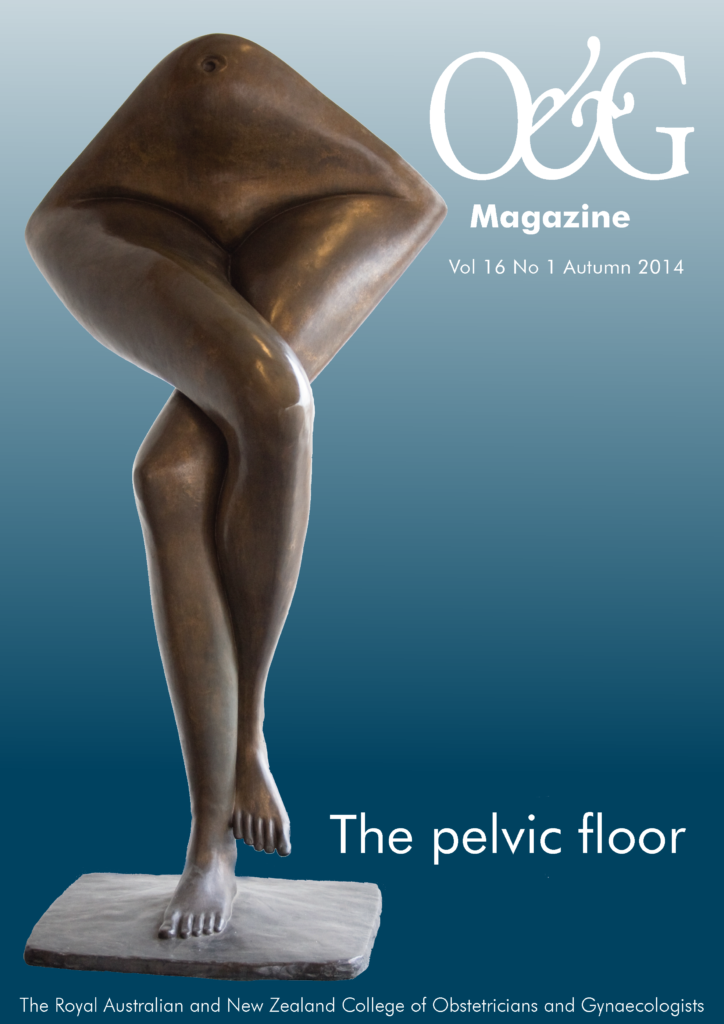Increasing numbers of women are using, or being encouraged to use, perineal stretching programs in the weeks before birth – do these programs work?
Perineal trauma during vaginal birth is a concern for both women and the professionals caring for them. Trauma may result in both short- and long-term sequelae including pain, incontinence, dyspareunia and psychological distress. There is an increased risk of perineal trauma in primiparous women, women receiving instrumental deliveries and/or episiotomy and deliveries of high birthweight babies. For these reasons, it is attractive for women to be able to prepare their perineum for childbirth to try and reduce the incidence and severity of damage. The methods of doing this include the EPINO ® childbirth training device and antenatal perineal massage.
The EPI-NO was invented by a German obstetrician as a childbirth and pelvic floor trainer. It consists of an inflatable silicone balloon that is attached to a hand-operated pump equipped with a pressure display. Women are instructed to insert the balloon into their vagina and inflate it until they feel pressure, but not pain. They then can contract and relax their pelvic floor muscles and gently expel the inflated device to simulate childbirth. Women are instructed to use the device from 36 weeks gestation and gradually increase the size to which the balloon is inflated. Women will generally use the device for one or two sessions of about 15 minutes daily. Proponents of the device suggest it may reduce perineal trauma by allowing gentle slow stretching of the perineal structures in the antenatal period, rather than a rapid traumatic tear during delivery. Shek et al draw the analogy of gradual stretching being used to avoid muscle injury in sports training.1
In 2004, Kovacs et al performed a pilot study in Melbourne in which 39 women who used the EPI-NO device for 15 minutes a day for 14 consecutive days between 37 and 39 weeks gestation and then had a vaginal delivery, were compared to 248 control women who had vaginal births at the same unit in the same period. While these are very small numbers, the authors found the use of the Epi-No significantly increased the rate of intact perineum (46 per cent in the study group, 17 per cent in the control group), and reduced the risk of tearing (28 versus 49 per cent). Rates of episiotomy and instrumental delivery did not significantly differ between the two groups. Hillebrenner et al performed a prospective studying comparing 50 primiparous volunteers who used the EPI-NO who used the device for ten minutes per day from 38 weeks gestation until spontaneous vaginal delivery.2 The labour outcomes for these women were compared to all women fulfilling the same inclusion criteria and delivering at their unit in the study period. The authors report a significantly reduced episiotomy rate in the EPI-NO compared to the control group (82 versus 47 per cent). They also reported a significantly higher neonatal Apgar score at one minute, but not at five or ten minutes.3
Kok et al reported a further prospective uncontrolled study of the EPI-NO in Singapore in 2004. The authors compared episiotomy rate, perineal trauma and postpartum analgesia requirements in 31 primiparous women who had used the EPI-NO from 37 weeks until delivery, with 60 consecutive primiparous women delivering in the unit over the same period. Women trained with the EPI-NO were instructed to use it for a maximum of 15 minutes per day with a mean frequency of use of five times per week for two weeks. The authors report a significantly decreased rate of episiotomy at vaginal in the EPI-NO group compared to the control group. It should, owever, be noted that the rates of episiotomy for the two groups were 65 and 93 per cent, respectively.4
More recently, there have been a number of randomised controlled trials of the EPI-NO. Ruckhäberle et al reported a multicentre trial in which 276 nulliparous women were randomly allocated to either use the EPI-NO for at least 15 minutes per day from 37+1 weeks of gestation, while the control group received routine obstetric care.5 Data for four women were not available at follow-up. There was no significant difference in mode of delivery between the two groups. There was, however, a significantly higher rate in intact perineum at vaginal delivery in the EPI-NO compared to the control group (37 versus 26 per cent). However, there was no significant difference in the degree of perineal tear or rate of episiotomy (41 versus 50 per cent). The authors reported no significant differences in duration labour, umbilical artery pH at birth or Apgar scores. The study showed no significant differences at six months in bladder neck mobility as measured by introital ultrasound, occult anal sphincter trauma measured by endo-anal sonography, or anal pressure at rest or with squeezing. During training with the device, eight per cent of women reported bleeding, nine per cent reported pain and six per cent abandoned training before delivery. There was no difference in vaginal infection rates between the two groups.
Shek et al report an Australian randomised controlled trial of 200 nulliparous singleton pregnancies, with 104 women receiving training in the EPI-NO and asked to used it up to two 20-minute sessions daily from 37 weeks gestation until delivery, while the control group of 96 women received normal care.1 Of the 146 women who returned for postpartum assessment at about five months after delivery, there was no significant difference in rates of episiotomy (EPI-NO: 22 per cent; control: 29 per cent), intact perineum (64 versus 74 per cent) mode or duration of delivery or Apgar scores. The authors’ main aim was to examine for levator ani muscle avulsion and microtrauma using 4D ultrasound. In a treatment received analysis there was a non-significant trend for both levator avulsion (seven versus 12 per cent) and levator microtrauma (21 versus 30 per cent) in the EPI-NO compared to the control group.
While studies of the EPI-NO are of variable quality, it does appear there may be a beneficial effect of the EPI-NO on reducing perineal damage during vaginal delivery, especially with nulliparous women. Furthermore, there doesn’t seem to be an increase in pelvic floor damage or infection associated with antenatal use of the device.
An alternative to the EPI-NO device is antenatal perineal massage. Women may either perform perineal massage themselves – gently stretching their perineum by placing their thumbs inside their vagina and applying pressure to their perineum – or their partners may perform similar massage using their fingers. Beckmann and Stock performed a Cochrane review that included four randomised controlled trials including nearly 2500 women of antenatal perineal massage to reduce perineal trauma. Nulliparous women receiving antenatal perineal massage had a significantly reduced risk of requiring suturing (RR=0.91, 95 per cent CI=0.86-0.96) or an episiotomy (RR=0.84, 95 per cent CI=0.74-0.95). Multiparous women who received perineal massage had significantly reduced pain at three months postpartum compared to control women (RR=0.45, 95 per cent CI=0.24-0.87). There were no significant differences for either nulliparous or multiparous women for degree of perineal tear, rate of instrumental deliveries or urinary, flatal or faecal incontinence.
Both antenatal perineal massage and the use of the EPI-NO device appear to provide some benefit in reducing perineal trauma with vaginal childbirth. Furthermore, they do not seem to cause significant perineal trauma or infection. Many women may find their use an acceptable method for improving perineal outcomes of birth.
References
- Shek, KL, Chantarasorn, V, Langer, S, et al. Does the Epi-No birth trainer reduce levator trauma: A randomised controlled trial. Int Urogynecol J. 2011 22: 1521-1528.
- Kovacs, G, Heath, P & Heather, C. First Australian trial of the birth training device Epi-No: A highly significantly increased chance of an intact perineum. ANZJOG. 2004. 44: 347-348.
- Hillebrenner, J, Wagenpfeil, S, Schuchardt, R, et al. First clinical experience with the new birth trainer Epi-No in primiparous women. Z Geburtsh Neonatol. 2000, 204, 1-8.
- Kok, J, Tan KH, Cheng PS, et al. Antenatal use of a novel vaginal birth training device by term primiparous women in Singapore. Singapore Med J. 2004. 45, 318-323.
- Ruckhäberle,E, Jundt, K, Bäuerle, M, et al. Prospective randomized multicentre trial with the birth trainer EPI-NO® for the prevention of perineal trauma. ANZJOG. 2009. 49: 478-483.
- Beckmann, MM & Stock OM. Antenatal perineal massage for reducing perineal trauma (Review). Cochrane Database of Systematic Reviews. 2013 Issue 4. Art. No.: CD005123. DOI: 10.1002/14651858. CD005123.pub3.






Leave a Reply